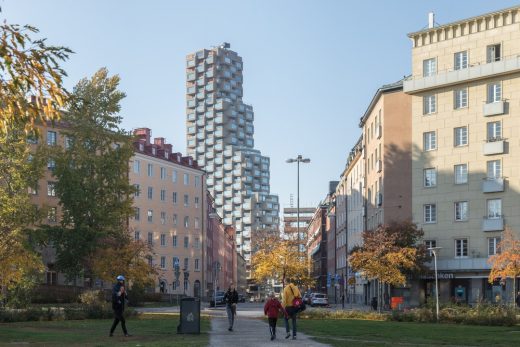Architectural translating guide, Translation services company tips, Design advice
Architectural Translation From the Eyes of A Translation Services Company
2 November 2021
Architecture and translation seem worlds apart. Translation, defined as the art of transformation from one language into another, one concept into its meaning in another language, primarily deals with words.
Architecture deals with the artful skill and exact science of buildings, creating structures that are both practical and expressive to the trends of this dynamic world. The prior deals with change, while the former deals with static boundaries. At least, that’s what it seems. Visit Languex translation if you require fast and accurate certified translation.
Architectural Translation Services Company Guide
And yet we could not be more wrong. The concept of translating is the process of change in people, ideas, information, technology and images–directly impacting the movement of architecture and design through culture, impacting its utilitarian and aesthetic purposes. In the meeting point of architecture and translation, translation is an agent of the linguistic boundaries and rules of culture, while that implements changes in architecture and design.
At the same time, this type of translating can become a means for others (architects, translators, and businesses) to participate in global exchange of culture. It is provided by sworn translation services in the US. This field encourages the ideas of different cultures meeting the global expectations in design; of measured thinking in global architecture; and of impactful change in the fields of both translation and architecture, with architecture translation the intersection in which they converge.
What is architecture translation?
Architecture translating is a branch of translations for the technical field, such as architecture and engineering. But more than that, this is making sure that the structure is tailor fit to each region, culture, and nation.
Architects or structural engineers who have the knowledge of multiple languages have the advantage to translate their own design reports, with their own terminologies and design manuals.
However, for those who don’t have the advantage of multilingualism in architectural translation, most turn to translation companies, who have linguists who acquire the technical skills with design components.
The linguists must be from architectural backgrounds, as well as from technical backgrounds such as science and engineering. They must also have reached a certain level of attainment in technical translating, as well as experience in this field.
Translation companies usually have a global pool of linguists who are assigned to specific architectural translating projects. However, this company would also either have their own glossaries and terminologies from their database, or must acquire one for the project.
Most technical projects like these need to be translated with a proper glossary. A glossary is invaluable to the work of a translator, in order to fit all your needs with their translation. Read more about glossaries in this article from ArchiSoup, which says:
“A glossary is a set of case sensitive/insensitive key terms and their definitions, part of speech, and translations. It’s helpful to provide your translators with a glossary if you’re translating industry- specific terms, or you just want a particular word to be translated the same way every time. This reduces guesswork and in turn keeps your translations more consistent…If you’re working with a translation agency, they may be able to help you create a glossary.”
Different terms for different nations must be translated for different languages, such as the word for architecture differs from nation to nation. That’s why an updated glossary is necessary.
Though there are standardized requirements and terms in architecture, there has to be a standard common ground when it comes to linguistic communication for those who will execute, such as construction workers, electricians, and plumbers.
Insights from the CEO of a Translation Company
As we’ve said previously, the notion of architectural translating is a highly technical one, and different from those of, say, translating literature. This specialized type has to have glossaries, terminology, and the skill of a technical translator from a translation company, who can translate reports, design concepts, and architectural analysis for architectural firms.
Ofer Tirosh, the CEO of Tomedes, a leading translation company has this to say:
“Transculturalization has occurred in many countries, reflected in various levels of 21st century architecture. An example of this includes the Teshima Art Museum by Ryue Nishizawa, an architect who has received the Pritzker Prize, which has four main concepts: site, procession, nature, and light, which was said to be unique for the rural Japanese terrain.”
Tirosh continues, “These concepts have been transposed to a structure in an urban setting in Waikiki, Hawaii. In these cases, with the help of technical linguists, we are able to extend the thought of one design in one setting to another design in quite a different setting.”
The effect of transposing from one structure to another requires differences and similarities in design concepts. This can also be done by a linguist, especially when transposing from one culture to another, or one global location to another. Linguists are trained to think globally, and translate locally.
In certain aspects of architectural design, such as in sustainable design, a translation company could build best practices and cultivate a culture of global, sustainable design. Using a native speaker who knows the language of design would truly be beneficial for architecture in general.
What goes into architectural translation?
This type of translation, which is a technical process that turns any and all literature of architecture, civil engineering, and any related aspects into the language necessary for another language or region. Projects, reports, and manuals for architecture, need the help of linguists to perfectly transcribe the words of one language to another.
Moreover, the translating of the designs must be localized to the region of their intended design. That way, the structure would suit the viewers of that particular nation/location, so that it’s more palatable to these cultural nuances. Therefore, aside from technical, it must also be artistic or creative.
In order to convey the intended meaning of the architecture document, the translator must translate or transcreate (translate loosely) the meaning to the architectural documents’ intended language.
Architectural translating company summary
Whether it’s structural design manuals or engineering computations, translation can benefit your firm in its efforts of global design. To be truly global, you have to think about the needs of the global populace, and one of those needs is related to language.
Linguistic endeavors of architecture, in communication, in documentation, is of high importance in the track to becoming global. With the help of linguists, it’s not an impossible task but an imperative task, to provide the best in architectural translation to the rest of the world.
Comments on this guide to Architectural Translation From the Eyes of A Translation Services Company article are welcome.
Residential Property Articles
New Property Designs

photograph : Laurian Ghinitoiu, Courtesy of OMA
Comments / photos for the Architectural translating – translation services company guide page welcome






